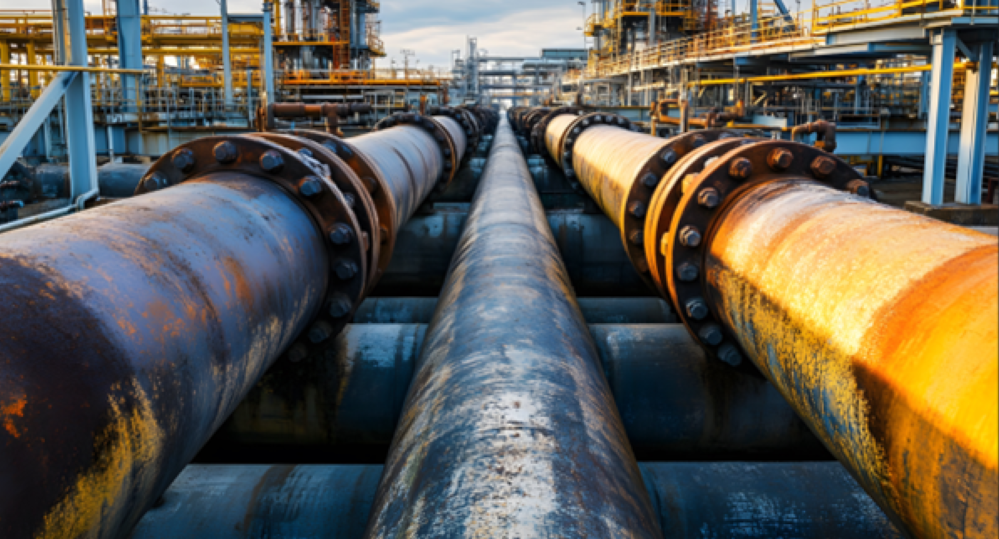Automated Guided Wave Ultrasonic Imaging for Continuous Pipeline Health Monitoring
KEY INFORMATION
TECHNOLOGY OVERVIEW
To ensure safe and cost-effective operations across various industries, it is essential to identify potential pipeline damage early to prevent leaks. This includes monitoring changes in wall thickness to estimate corrosion rates and alerting operators with advanced warning signals about possible corrosion, allowing for rectification before leaks occur.
Conventional thickness evaluation processes require manually scanning pipelines using probes, a method that is tedious and challenging, especially in remote locations. Additionally, the high upfront costs (approximately 75%) of traditional non-destructive evaluation (NDE) methods are often incurred before each pipeline thickness measurement. These costs can be even higher if the pipelines are in inaccessible or harsh environments.
To address these challenges, an innovative guided wave monitoring system has been developed, which can be permanently installed at critical points along the pipeline network. This system continuously monitors pipeline wall thickness and assesses potential corrosion damage. Compared to other NDE techniques, it accurately measures corrosion rates, sends early warning signals when wall thickness falls below a critical threshold, and significantly reduces the costs associated with setting up measurement equipment in difficult-to-access environments.
TECHNOLOGY FEATURES & SPECIFICATIONS
The developed solution utilises guided wave tomography, which offers good potential to monitor the thickness of corrosion patches without requiring access to the entire surface. It uses the dispersion characteristics of guided waves and reconstructs a thickness map by inverting ultrasonic signals captured by a transducer array positioned around the inspection area.
A novel guided wave tomography method based on full waveform inversion (FWI) is applied to the developed solution for corrosion mapping. It uses a forward solver to predict the scattering of guided wave through defects in the acoustic model, and an iterative inverse model to reconstruct the corrosion profile. At each iteration, numerical modeling is performed to minimize the least-squares residual between the modeled and observed data. This approach overcomes the limitations of ignoring crucial low-frequency effects in travel-time tomography and accounts for higher-order diffraction and scattering in its numerical solver, providing more accurate inversion results.
The guided wave tomography method based on FWI is first applied to measure defects at an accelerated corrosion site. The reconstructed thickness map is compared with measurements from a laser profilometer. The technique is also used to predict the corrosion rate, which can then be compared with predictions from Faraday's Law.
POTENTIAL APPLICATIONS
This guided wave monitoring system can be deployed in the oil and gas industry, where pipeline integrity is crucial to prevent gas leaks and failures. It also has applications in other industries, such as chemical manufacturing, water supply, power generation, and mining, where corrosion and leaks pose risks to safety and efficiency. Key applications include remote monitoring of pipelines in harsh environments, corrosion detection, and early leak prevention. This technology eliminates the need for manual inspections in difficult-to-access areas, making it ideal for offshore platforms and desert pipelines.
Marketable products from this technology include permanently installed corrosion monitoring devices, real-time integrity monitoring systems, and early warning systems for gas leaks. Additionally, data analytics platforms could be developed to track corrosion rates, predict future wear, and optimize maintenance schedules.
This innovation can significantly enhance safety, reduce inspection costs, and improve operational efficiency across various industries where pipeline integrity is essential.
Unique Value Proposition
This guided wave monitoring system improves upon current state-of-the-art pipeline inspection technologies by offering:
- Continuous, real-time monitoring of pipeline wall thickness and corrosion rates.
- Eliminates the need for labor-intensive and costly manual inspections.
- Provides accurate, real-time corrosion data.
- Reduces operational costs.
- Enhances safety in pipeline monitoring.
- Ideal for industries with complex and hard-to-reach pipeline networks.
The technology owner is seeking R&D collaboration and test-bedding opportunities with oil & gas, chemical, power generation, and mining companies, as well as pipeline maintenance and inspection firms, industrial IoT providers, and monitoring equipment manufacturers.

